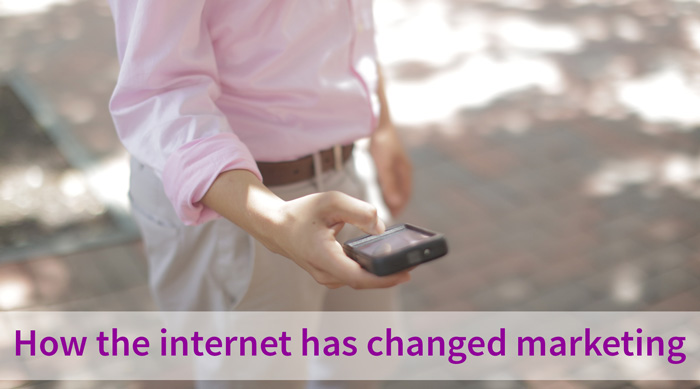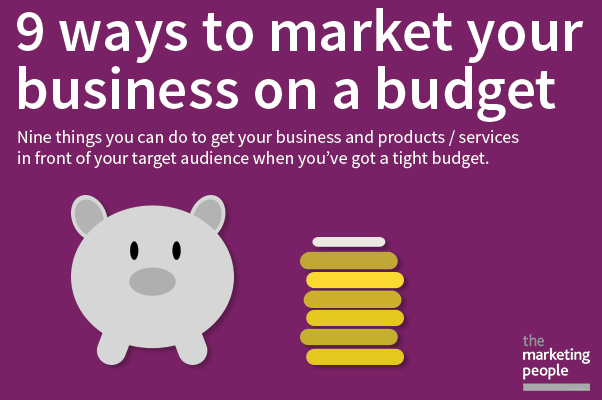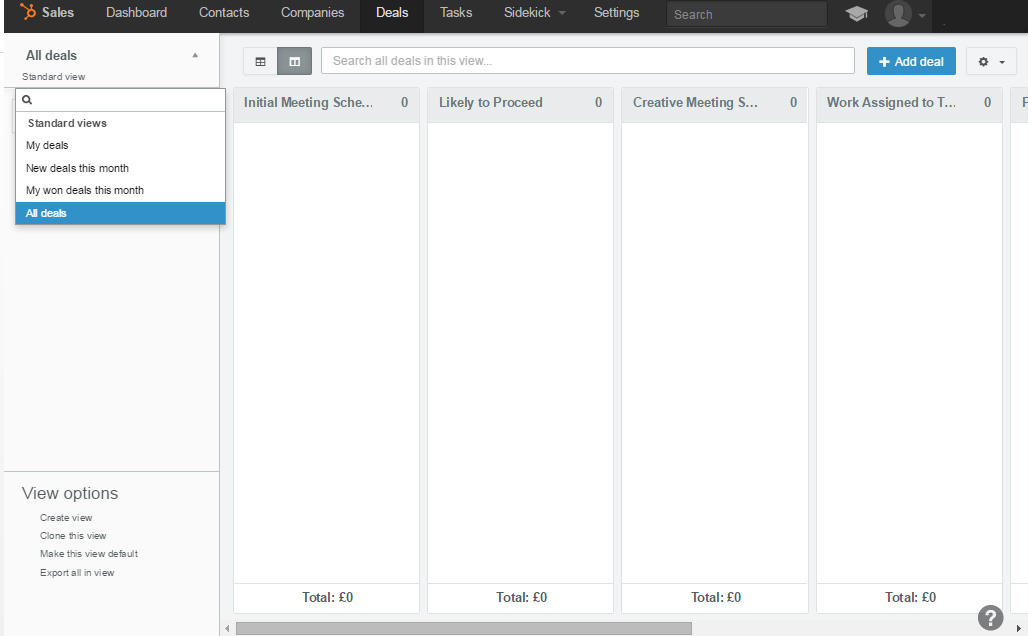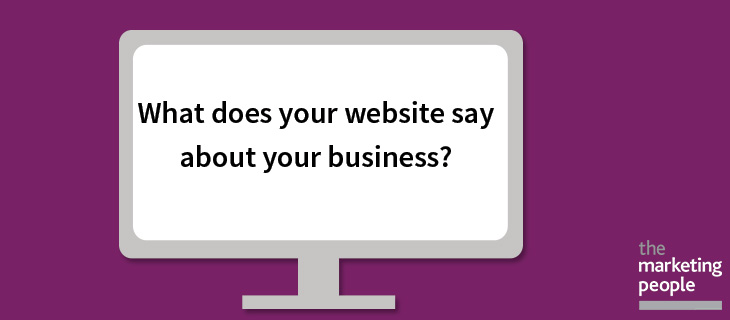

Your website says a lot about your business. Not just the words, but the look, feel, and usability can influence your audience’s perception of your business.
It’s an online representation of your business and will often be the first experience your target audience have with your business.
That means it has the huge task of appealing to your audience, representing your business / products / services correctly, and encouraging people to convert.
Let’s take a look at what your website says about your business. The good and bad, and what you can do to fix the bad.
The bad
Out-of-date
Web design trends change quickly, so it’s easy to spot a website which hasn’t had a major update in the past few years.
Keeping your website copy updated regularly is one thing. But it will probably be quite hard for users to tell when the last time your copy was updated. However, it’s much easier for them to take a look at the design of your website and figure out when it was last updated.
You might think the design of your website isn’t important. But it can have a big impact on someone’s perception of your business. That can be the difference between them becoming a customer or going elsewhere.
Outdated websites might suggest that your business, products, and service are outdated. That perhaps you can’t offer them the best solution to their problem. Even if you actually could offer than a better product than any of your competitors.
Additionally, out of date websites can be associated with suspicious websites. The last thing you want is someone taking a look at your website and thinking you’re going to take their money and never send them what they ordered.
While it’s true that not all suspicious websites look out of date, an out of date website is something people will often see and say “nope”, and hit the back button.
Humans are very visual, and we do judge things and make decisions based on appearances.
How to fix it: If it’s been a few years since your website had a redesign, there’s no time like the present!
It’s confusing to use
We’ve all come to expect websites that are simple to use and allow us to find exactly what we’re looking for in as few clicks as possible.
The aim of your website is to get people to convert. But if you’re providing them with a confusing user journey then it’s much harder for them to do that.
A confusing website can put people off instantly. It suggests that you aren’t really interested in providing your target audience with the best experience possible.
There are plenty of websites that do provide a great experience. So someone won’t have to look far to find a competitor whose website is easier to use.
How to fix it: review your website and look at how you can simplify the user experience to make things as easy as possible.
You haven’t got a responsive website
Responsive websites have been a hot topic over the past year and there’s a good reason for that.
With smartphones being the most popular device to access the internet on in the UK, it’s imperative that your website is responsive.
If it isn’t, you’re providing a big portion of your audience with a poor user experience. And your search rankings in mobile search results may suffer as a result. If someone is ready to buy and they can’t buy because they’re using their phone and it’s hard work on your website, you’ve just lost a sale.
An unresponsive website suggests to your audience that you are out of date. You don’t think your website is all that important. And that you aren’t focused on providing your audience with the best experience possible. And that’s before you think about any future purchases they may have made. But won’t because their perception is that you don’t care about your audience as much as another company.
How to fix it: update your website to a responsive one to make it easy for users to use no matter what device they’re using.
Hard to get in touch with
One of the things people may look for before making a purchase is your customer service details. None of us want to waste money when we make a purchase. We like to know that if there’s an issue we can get in touch with someone easily to get our problem solved.
If your contact details are hard to find, that can set alarm bells off.
“Why are they making their contact details so hard to find? Don’t they want people to get in touch with them? Why don’t they want people to get in touch with them? If there’s a problem, I’m going to struggle to get it resolved quickly. I think I’ll just go somewhere else.” You’ve probably had a similar thought process yourself when you come across a website that makes it hard for you to find contact details.
No matter how good your product is. How many glowing reviews you have. Or how competitive your price is. Hard to find contact details can send a potential customer running.
How to fix it: Create a contact page which is easy to find, and consider putting a telephone number or email address in the header of your website.
No reviews or testimonials
People trust reviews more than they trust your marketing material. Looking at reviews before purchasing has become a big part of the buying process. According to Econsultancy, 61% of shoppers read reviews online before purchasing.
Reviews are especially important if someone has never heard of your company before. Or doesn’t know anyone who’s used your company before.
No one wants to be ripped off, and trust is a big thing when it comes to making a purchase decision. A lack of impartial reviews can put someone off and convince them to buy from a competitor who has reviews.
It’s not hard to get reviews or testimonials from your customers. They can make a huge difference to your audience’s perception of your business.
How to fix it: Get in touch with customers a few days after their product should have arrived. Ask them to provide you with a short review or testimonial.
Little product or service information
The internet has made us pretty lazy consumers. Which means that we want all the information to be available to us without us needing to actually speak to you. It doesn’t matter how good your customer service is, most people don’t want to call or email you unless they absolutely have to.
If your product information is lacking, then we’ll just find someone else who gives us all of that information up front because it’s easier than getting in touch with you.
A lack of product information can suggest that you don’t really care about your audience. That you don’t want to help them find the solution to your product. Why else would you leave them asking so many questions about the product?
If you are offering a service then your audience may not be able to buy directly on your website. So make sure you give them as much information as you can up front. This gives them chance to think about what questions they might need to ask you when they’re ready to speak to you and arrange the next step.
How to fix it: Make a list of all of the things your audience would want to know about a product / service and make sure all product descriptions / pages contain that information.
Yes, it can be time-consuming. It requires more effort than copying and pasting the manufacturer’s description. But it’s worth it in the long run.
It may also be helpful to review your competitors and look at what information they are providing. Is there anything missing? What else could they have included? Make sure you are giving your target audience a better experience than your competitors.
A poor brand
While not restricted to your website, a poor brand can really harm the perception of your business.
As we mentioned earlier, your website may be the first time someone sees your business. Which means that both your website and your brand need to appeal to your audience.
If your brand looks outdated, doesn’t appeal to your audience, or just looks plain bad, it can put customers off.
A poor brand can suggest that you are outdated, untrustworthy, and offer a bad service. Additionally, it can also position you incorrectly and leave your audience to believe that you are too cheap or too expensive for them.
A strong brand on the other hand, will communicate to your target audience. That you are, and offer, exactly what they are looking for.
How to fix it: If your brand is poor, it’s time to look at rebranding. Because it’s likely that your current brand is doing you more harm than good.
The good
Helpful content
Providing helpful content for free on your website is a good way to impress your target audience and show them that you want to help them find the solution to their problem, and get the most out of it.
There are thousands of different types of useful content you could provide, but here are a few ideas to get your creativity flowing:
- Tutorials on how to do certain things – you might even do beginner, intermediate, and advanced tutorials
- Recipes
- Style trends – you could blog about how to wear a certain popular garment, or talk about interior design trends, or popular hairstyles – of course this will depend on your sector
- Other uses for your product / service
- Stories about how your customers have used your product / service and how it helped them
You don’t just have to write blog posts either, there are many ways you can share that information with your audience, including: videos, infographics, podcasts, slideshows, and more.
Lots of photos
As we mentioned earlier, we are heavily influenced by imagery. Providing your audience with lots of photos, and maybe even a video, of your product from multiple angles, in different colours, and in use can convince someone to hit the ‘buy’ button.
When we can’t go into a shop to see and hold something, we rely on images and videos to;
- Help us get a feel for the product
- Look at the material it’s made from
- See the size of it, where things are located
- Begin to understand how it is used
- See the exact colours – it’s ok telling us something comes in blue, red, and green, but exactly what shade of blue, red, and green?
If you’re providing your audience with multiple images of products then you’re doing them a huge favour and making the consideration stage very easy for them.
An appealing tone of voice
Your tone of voice and the words you use can grab a customer’s attention and convince them that you’re the best company for them. Or your tone of voice can put them off by coming across the wrong way.
The exact tone of voice and the words you need to use will depend on your business, what you’re selling and your target audience.
If your audience are teenage boys, your tone of voice won’t be the same as a business whose target audience are Mums.
By using a tone of voice that resonates with your audience you’re suggesting that you know who your audience are and what they like.
We like buying from brands who we feel ‘get us’ and share the same values as us, and this can help you gain loyal customers who don’t even consider going somewhere else when they need something that you sell.
Trustworthy
There are many aspects of your website and your brand which your audience will use to decide whether or not you’re trustworthy. However, if you’re an ecommerce website there are specific things you can do to show your audience that your website is safe.
Online fraud is always at the back of consumer’s minds whenever they purchase online, and they want to be sure that they’re ordering from a website that will protect their personal information.
If you have SSL certificates and trust badges on your website, such as Symantec, Norton, McAffee, and TRUSTe, it suggests that you are committed to protecting your customer’s data. These badges give users faith that your website is secure and that you are doing your best to keep their information safe.
This list is by no means exhaustive, but it covers the key things that your website is saying about your business and your products.
Your website is not something that you just do once every few years and forget about it. To provide your target audience with the best experience, you should be regularly reviewing it and looking at what you can do to provide a better experience and be more helpful.
If you do require any help or advice with your website, why not speak to the experts? All of our team are friendly, efficient, and have a passion for marketing, so what do you have to lose? Call us today on 01543 495752.
If you want to read more from our website series of blogs, just click here to see what other resources are available.

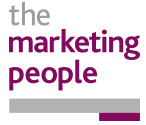

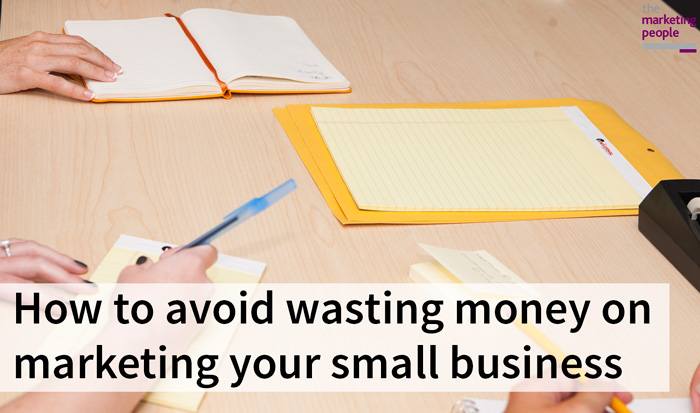

 To check the time in your WordPress settings, go to ‘Settings’ and click ‘General’. Halfway down the page, you will see ‘Time zone’ which lets you choose which time zone you’re in.
To check the time in your WordPress settings, go to ‘Settings’ and click ‘General’. Halfway down the page, you will see ‘Time zone’ which lets you choose which time zone you’re in.